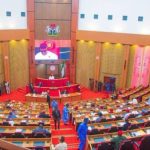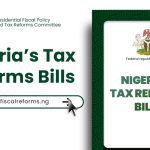The New Tax Reform Bills (VAT Reform) – A Simple Explainer And Advisory

On The New Tax Reform Bills (Particularly VAT Reform): A Simple Explainer And Advisory To The Government
- By Abdulhaleem Ringim
I took time to review these new tax reform bills and to be honest, the committee behind their drafting has done a commendable job. I am satisfied with almost everything contained within the bills, except for one specific area where I need further clarity: the aspect related to VAT.
OVERVIEW
The current system of sharing VAT revenue operates as follows:
1. All VAT revenue collected monthly is distributed as follows:
• Federal Government: 15%
• State Governments and FCT Abuja: 50%
• Local Governments: 35%
2. The 50% allocated to state governments is further distributed in this manner:
• 50% equally distributed: Each state and the FCT receive an equal share of this portion. For instance, if the states’ total share is N100 million, 50% (N50 million) is divided equally among the 36 states and the FCT.
• 30% based on population: This portion is distributed according to the population of each state and the FCT, with larger states receiving a higher share.
• 20% based on derivation: This is distributed according to the VAT revenue collected by each state. The more VAT collected within a state, the greater its share.
3. The derivation component (20%) has been a subject of contention for years. Lagos State, for example, collects the highest VAT not necessarily because more VAT-generating transactions occur there but because most major companies have their headquarters in Lagos. As a result, they pay VAT from activities conducted nationwide directly in Lagos – Headquarter Effect.
For example, if you make a call in Kaduna using your MTN line, the VAT charged for that call is not paid in Kaduna. Instead, MTN aggregates VAT collections nationwide and remits them from its headquarters in Lagos. This inflates Lagos’ VAT contributions and increases its derivation share.
WHAT DO THESE NEW BILLS PROPOSE, SPECIFICALLY ON VAT?
1. The bills propose changes to the distribution formula:
• Federal Government share: Reduced from 15% to 10%.
• State Governments’ share: Increased by 5%, bringing it to 55%.
• Local Governments’ share: Maintained at 35%.
2. Changes to the state governments’ allocation formula:
• The 50% equal share is reduced to 20%.
• The 30% population-based share is also reduced to 20%.
• The 20% derivation share is increased to 60%.
READ ALSO: 10 Things You Should Know About Controversial Tax Reform Bills
3. A significant change in the VAT collection system:
• Instead of companies remitting VAT from their headquarters, VAT will now be collected and remitted in the state where the VAT-generating transactions occurred.
REQUEST FOR CLARIFICATION AND RECOMMENDATION
This proposal could potentially be an excellent reform. Increasing the derivation share to 60% and shifting the collection system to a location-based system may indeed enhance fairness and accountability.
However, taxation is a complex, numbers-driven issue.
• How was it determined that Lagos is benefiting disproportionately? The conclusion was solely based on transparent data showing the disparities.
• Since these bills supposedly aim to improve fairness in VAT revenue distribution, there must be clear projections showing how much revenue each state is expected to collect and receive under the proposed system. These figures should be compared with what states currently receive under the existing system.
The government is hence advised to publish this data for public review, allowing citizens to assess the fairness of the new system based on actual numbers in comparison with the previous system.
If the data clearly shows increased equity, it would silence critics.
However, if the projections cannot be provided, it might be better to maintain the current VAT revenue-sharing formula for now while implementing the proposed location-based collection system.
This would allow the impact of the new collection method to be observed, particularly its effect on the current 20% derivation share.
Once the data demonstrates fairness, the legislature can then adjust the distribution formula to incorporate the 60% derivation share as proposed.
- Abdulhaleem Ishaq Ringim, a Public Policy enthusiast, writes from Zaria. He can be reached via haleemabdul1999@gmail.com
The opinions expressed in this publication are solely those of the author. It does not represent the editorial position or opinion of OSUN DEFENDER.









